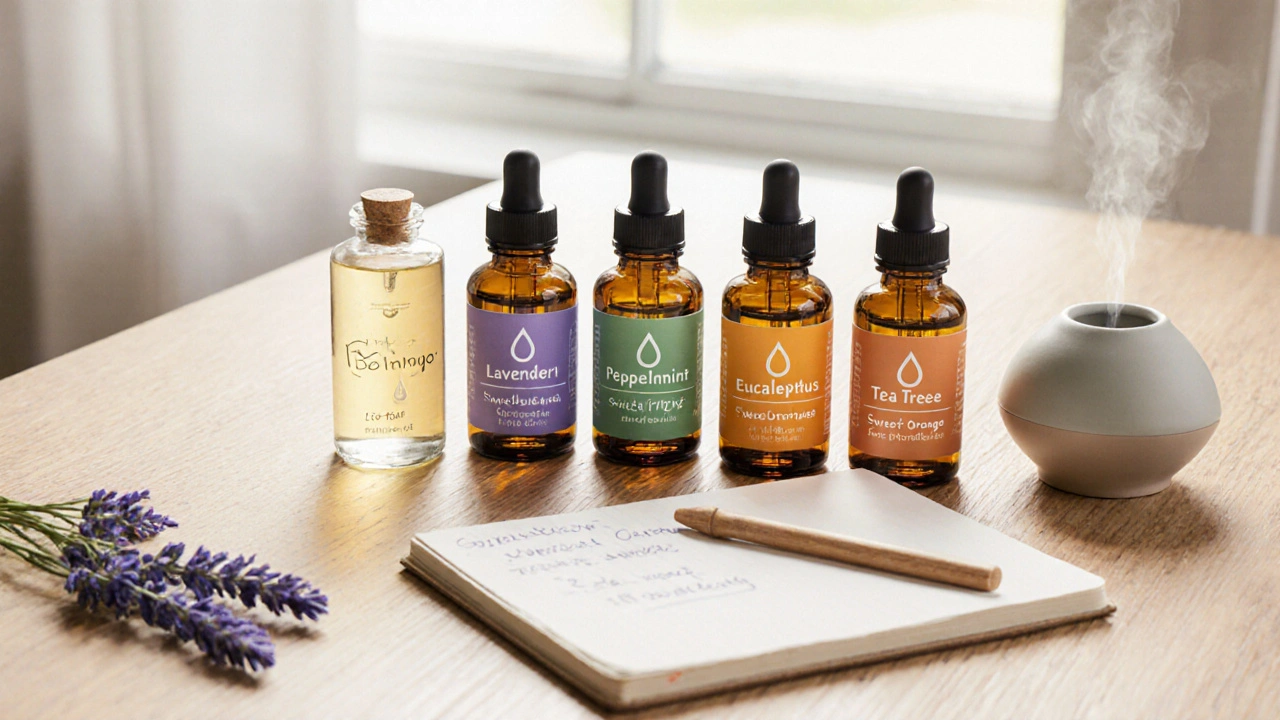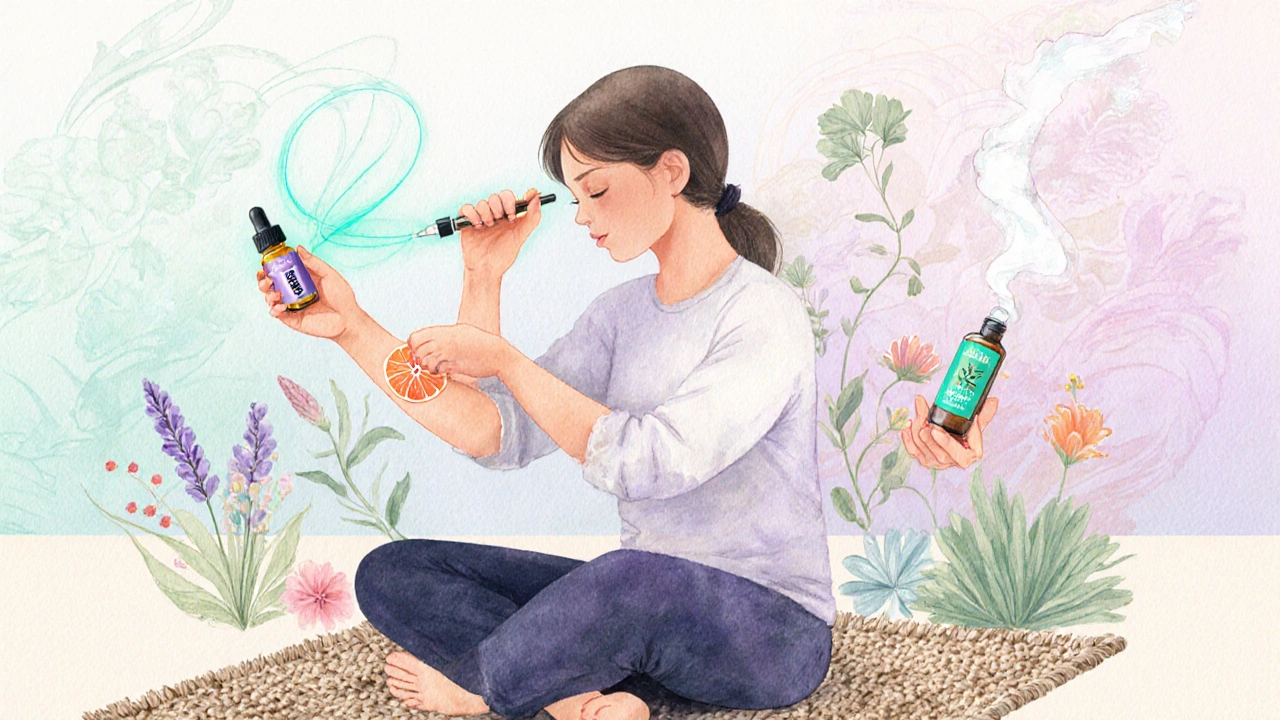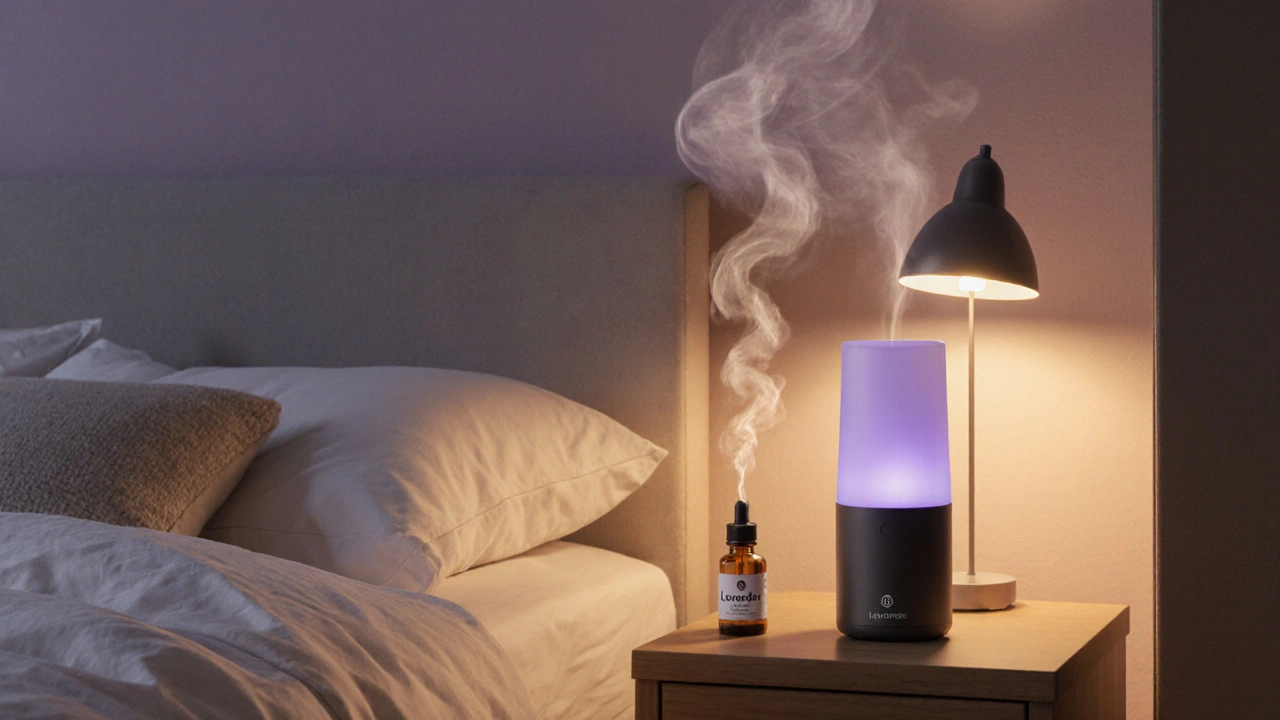Essential Oil Dilution Calculator
How to Use
Enter your carrier oil volume and select an essential oil to calculate the correct amount of drops for safe topical application. Always dilute essential oils before skin contact.
Ever wondered why a whiff of lavender can calm a frantic mind or why peppermint sharpens focus in a crowded office? Those little miracles come from aromatherapy for beginners - a practice that turns plant extracts into daily wellness tools. If you’ve never tried it, this guide will walk you through everything you need to start safely and enjoyably.
Key Takeaways
- Understand what aromatherapy is and how it works on the body.
- Know the top five beginner‑friendly essential oils and their core benefits.
- Learn safe dilution ratios and the role of carrier oils.
- Discover easy application methods: diffusion, topical, and inhalation.
- Spot common pitfalls and how to avoid them.
What Is Aromatherapy?
Aromatherapy is a holistic practice that uses volatile plant extracts, known as essential oils, to influence physical, emotional, and mental health. The idea dates back to ancient Egypt, where scented oils were part of burial rituals and healing rites. Modern science shows that these aromatic compounds interact with the limbic system - the brain area that controls memory and emotion - via the nose and skin.
Essential Oils: The Heart of the Practice
Essential oil is a concentrated hydrophobic liquid extracted from plants, capturing their fragrance and therapeutic properties. Each oil carries a unique blend of terpenes, phenols, and alcohols that give it a distinct scent and effect. Below are the five oils most recommended for those just starting out.
| Oil | Scent Profile | Primary Benefit | Best Use | Typical Dilution |
|---|---|---|---|---|
| Lavender | Floral, herbaceous | Relaxation & sleep support | Diffuser or pillow spray | 1‑2% (1‑2 drops per ml carrier) |
| Peppermint | Minty, sharp | Energy boost & headache relief | Inhalation or diluted skin rub | 0.5‑1% (0.5‑1 drops per ml carrier) |
| Eucalyptus | Fresh, camphoraceous | Respiratory support | Steam inhalation or chest rub | 1‑2% (1‑2 drops per ml carrier) |
| Tea Tree | Sharp, medicinal | Antimicrobial & skin care | Spot treatment or facial oil | 1‑2% (1‑2 drops per ml carrier) |
| Sweet Orange | Citrusy, uplifting | Mood elevation & stress reduction | Diffuser or bath blend | 2‑3% (2‑3 drops per ml carrier) |

How Aromatherapy Works in the Body
When you inhale an oil’s vapor, olfactory receptors send signals straight to the limbic system. This can trigger the release of neurotransmitters like serotonin or reduce cortisol, the stress hormone. When you apply oil on the skin, the compounds penetrate the epidermis and interact with blood vessels, providing localized relief (e.g., peppermint’s menthol eases muscle tension).
Choosing the Right Application Method
Three methods dominate home use:
- Diffusion: A diffuser is a device that disperses oil‑laden mist into the air, creating an ambient therapeutic environment.
- Topical: Mixing essential oil with a carrier oil (such as jojoba, sweet almond, or grapeseed) prevents skin irritation and helps the oil absorb.
- Inhalation: Simple steam inhalation or a personal inhaler delivers a concentrated burst directly to the nose.
Pick the method that fits your routine. For nightly relaxation, a diffuser in the bedroom works wonders. For on‑the‑go focus, a personal inhaler with peppermint is a fast fix.
Safety First: Dilution, Sensitivities, and Storage
Essential oils are potent - a little goes a long way.
- Follow dilution guidelines. A 1% dilution equals one drop of essential oil per 5ml (≈1tsp) of carrier. For children or sensitive skin, drop to 0.5%.
- Patch test before full application. Apply a tiny dab of the diluted blend to the inner forearm; wait 24hours for any reaction.
- Know contraindications. Eucalyptus, for example, should be avoided around infants under two years.
- Store properly. Keep bottles in dark glass, away from heat and direct sunlight to preserve potency.
Creating Your First Blends
Start simple: combine two complementary oils in a 2:1 ratio. Here’s a starter blend for stress relief:
- 5ml of sweet almond oil (carrier).
- Add 3 drops of lavender and 1 drop of sweet orange.
- Shake gently and apply to pulse points (wrists, temples) before bedtime.
The lavender calms, while the orange lifts mood, creating a balanced finish. As you grow confident, experiment with three‑oil combos or seasonal blends.

Common Pitfalls and How to Dodge Them
- Over‑application: Using too many drops in a diffuser can cause headaches. Start with 3‑5 drops per 100ml of water.
- Skipping the carrier: Direct skin contact with undiluted oil can cause burns or dermatitis.
- Ignoring quality: Look for oils labeled “100% pure, therapeutic grade, steam‑distilled.” Cheap synthetics lack the therapeutic compounds.
- Mixing with alcohol‑based products: This can degrade the oil’s chemical structure.
Measuring Success: When to Expect Results
Because aromatherapy works on subtle neurochemical pathways, effects vary. Some users feel a calming shift within minutes of inhalation, while skin benefits like reduced inflammation may need daily use for 1‑2 weeks. Keep a simple journal: note the oil, method, time of day, and how you felt. Patterns will help you fine‑tune your routine.
Next Steps for the Curious Beginner
Ready to turn the theory into habit?
- Buy a starter kit containing a diffuser, a small selection of the five oils listed above, and a carrier oil.
- Set up a nightly ritual: 5‑minute diffusion of lavender, followed by the simple carrier blend on pulse points.
- Experiment with a weekly “focus boost” using peppermint inhalation before work or study.
- Track outcomes in a notebook or phone app for at least 30days.
- When comfortable, explore advanced techniques like massage blends or aromatherapy bath salts.
Remember, aromatherapy complements, not replaces, medical care. If you have chronic health conditions, check with a healthcare professional before diving deep.
Frequently Asked Questions
Can I use essential oils during pregnancy?
Most sources advise limiting use to low‑risk oils like lavender and sweet orange, and always at a 0.5% dilution. Avoid strong herbs such as rosemary, clary sage, and peppermint on the abdomen.
What’s the difference between a diffuser and an oil burner?
A diffuser uses water and ultrasonic vibrations (or heat‑free nebulization) to create a fine mist, preserving the oil’s therapeutic compounds. An oil burner heats the oil over a candle flame, which can alter its chemistry and produce a stronger, sometimes irritating, scent.
How long do I keep a diluted blend on my skin?
Generally 15‑30minutes for a therapeutic effect, then wipe off if you notice any irritation. For massage oils, the blend can stay on for up to an hour before re‑application.
Is it safe to apply essential oils to pets?
Some oils are toxic to animals, especially cats. Lavender and chamomile are usually safe in very low amounts, but always consult a veterinarian before using any oil around pets.
Can I mix essential oils with lotion or shampoo?
Yes, as long as the final concentration stays below 1‑2% and the product’s base is compatible (e.g., oil‑based lotions). Avoid adding oils to products containing alcohol or strong preservatives.
